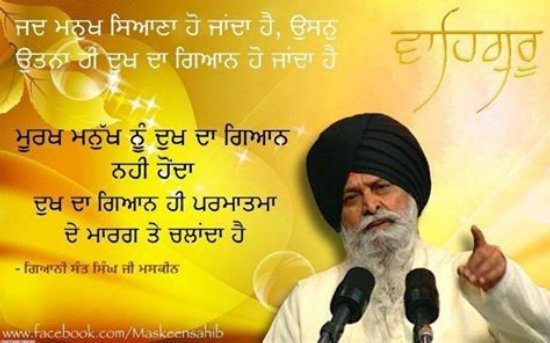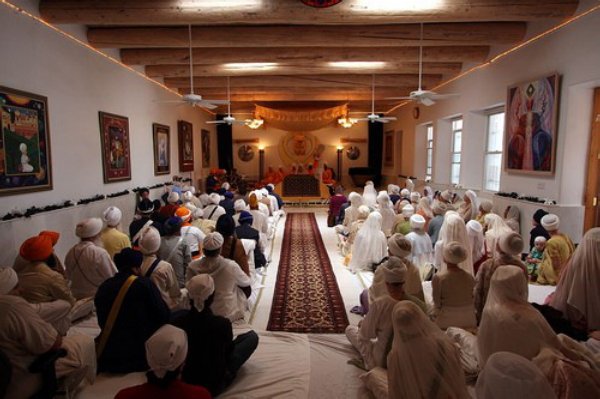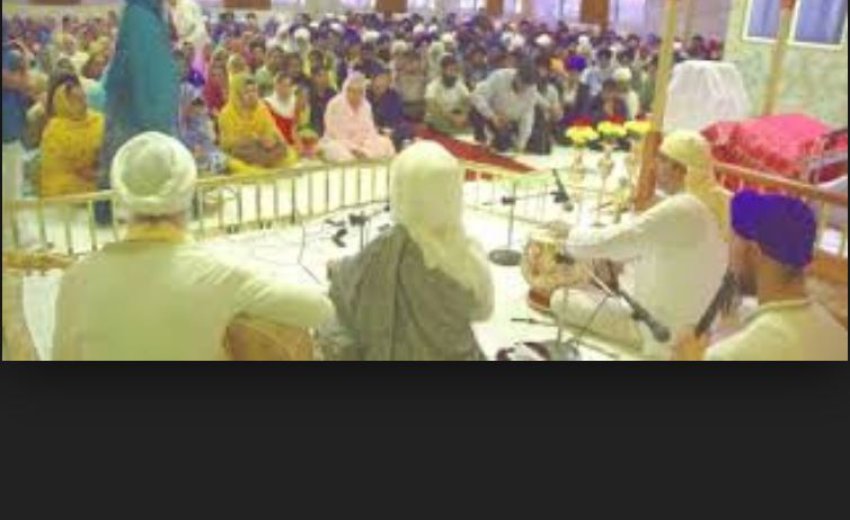Book Review
Concept of Sadh Sangat in Sikhism
Author: Makhan Singh
Hemkunt Publishing,New Delhi
Pg.232, Rs.395.00, 2017
Sangat with Bani as Foundation of Sikh Society
I am deeply thrilled to receive the recently released book entitled CONCEPT OF SADH SANGAT IN SIKHISM by Sardar Makhan Singh. In fact, it is a dream come true. Let me explain.
Some time ago, during my visit to New Delhi, Sardar Makhan Singh arranged a couple of public receptions for me. One was at Gurdwara Rakab Ganj Sahib where the Delhi Sikh Gurdwara Management Committee (DSGMC) honored me with the sacred Siropa with Sri Sahib. I spoke there at the special function held to celebrate the birthday of Sri Guru Ram Das. I was thankful for the honor and love that the Panth had showered upon me.
In the evening, many old members of the All India Sikh Students Federation assembled to refresh the memories of the past times we had shared in our youth days. On this occasion, Sardar Makhan Singh - a past President of AISSF presented a set of books to me. In the package was included the book Sardar Makhan Singh had just published.

Fig 1:Giani Sant Singh Muskeen exegesis of Gur-Bani hymns in a Sikh congregation
I took no time to glance over the contents and was pleased that someone amongst my colleagues took time and efforts to elucidate an essential Sikh doctrine in one volume.
I had earlier seen the monograph edited by Professor Balkar Singh of Punjabi University on the same subject; it was a collection of papers by nearly two dozen distinguished authors.
Both of these books covered the topic of the GurSangat or the Sangat and Bani (verses of Sri Guru Granth Sahib) comprehensively. Makhan Singh chose the style of one author to articulate the doctrine that provided a more coherent reading in one long essay.
However, something was missing in both volumes; they were in a language that our youth in Western countries could not take advantage of. They lacked meaningful understanding of the Guru Granth language even though they had learned to read Punjabi. When my turn came to thank Sardar Makhan Singh for the gift he honored me with, I appealed in no uncertain terms that his book needed to be rendered in English.

Fig 2: A typical Sikh congregation connecting to Gur-Bani through chanting, exegesis, and reciting.
No one believed it could be done given the inadequate resources available and general satisfaction among the Sikhs in India that the Guru's messages would somehow reach the whole world even when it is in Gurmukhi. It is in this context that I am so much pleased to learn that an idea that was just a dream a few years ago is now a reality.
We learn that when Guru Nanak visited Sidhas during one of his spiritual expeditions, he availed that opportunity to spell out the Gurmat doctrine in its totality. A reference in his dialogue with the Hindu scholars of the time contains a clear pointer on the undisputable place of the institution of the Bani-Sangat as the building block of Sikh spirituality and Sikh society that was soon to become Guru Panth.
The Sikh theologian of the Guru's court, Bhai Gurdas, related one of the Siddha's questions as below. The Siddhas asked Guru Nanak about his miracle on this earth that would establish his prophetic status. A miracle used to be a litmus test for the divinity of a prophet in the society of those days.
isiD boly suix nwnkw quih jg no krwmwiq idKlweI ]
Siddhas asked Nanak, what is the miracle you were going to show the world that would demonstrate the divinity of your mission and rank? (Bhai Gurdas, Vaar 1, Pauri 42)
Guru Nanak answered that he could not think of another miracle as meritorious as one that would establish the Congregation around the sacred hymns of the Gurbani as the basic unit of his new spiritual society or Panth:
gur sMgiq bwxI ibnw dUjI Et nhI hY rweI ]
Nanak responded that he could not think of another miraculous asset as meritorious, as the establishment of his congregations around the Guru's hymns; he does not depend as much on any other institution to bring his message into practice. (Bhai Gurdas, Vaar 1, Pauri 42)
According to Bhai Gurdas, the Sangat and Bani are the institutions that establish the strongest bonds between a Sikh and his Guru. He describes the relationship between the Sangat and Bani as intimate as between fragrance and flowers, sweet taste and fruit, and butter and milk. Then he ends up with the statement as paraphrased here.
pIr murIdW iprhVI sMgiq gurbwxI ]
A Sikh and the Guru are bonded through the relationship between the Guru Bani and Sangat (congregation). (Bhai Gurdas, Vaar 27, Pauri 22)
The Founder of our faith, Guru Nanak, anticipated the new ecological age to consist of a worldwide community of an increasingly close-knit global village. Here cultures and religions, which were once isolated from one another, would live as near neighbors. At the same time, new ideas and insights resulting from science and technology will season the interaction among faiths, and between faith and culture of the faith people. In this society, only congregations of the seeker (sangat) will be the saviors of a faith. The Sikh congregations where the people of faith gather to learn to practice the beliefs, as enshrined in Sri Guru Granth Sahib, would be indispensable institutions for our persistence and spread. Thus, the doctrine of the Sangat and Bani must be elucidated as clearly as possible.
I congratulate my colleague Sardar Makhan Singh for his contribution to providing Sikh literature in English in response to the needs of our generations today.
The book described the subject comprehensively in 18 chapters like:
1. Concept of Sadh Sangat in Sikhism;
2. Sadh Sangat and Ku-sangat;
3. Guru and Sadh Sangat;
4. Sadh Sangat and the Treasure of Naam;
5. Sadh Sangat and Langar;
6. Sadh Sangat and Service;
7. Traditions of Sadh Sangat;
8. Sadh Sangat and Kirtan;
9. Sadh Sangat and Katha;
10. References to Sadh Sangat in Sikh History;
11. Sadh Sangat and Way of Life;
12. Sikh Mode of Salutations;
13. Sadh Sangat and Rahit Maryada;
14. Sadh Sangat (Congregation) Ardas and Vak;
15. Sarbatt Khalsa and Sarb Hind Sikh Mission;
16. Sadh Sangat & Manji System;
17. Integral Aspects of the Sikh Society: Bani, Sangat and the Sarbatt Khalsa;
18. Epilogue-Gurmat which Sadh Sangat Da Sankalap.
This book will similarly benefit the Sikh scholars and Sikh students, Sikh historians and Sikh laity.
Bhai Harbans Lal, Ph.D., D.Litt. (Hons.)
Emeritus Chairman - University of North Texas Health Science Centre,
Email: [email protected]
